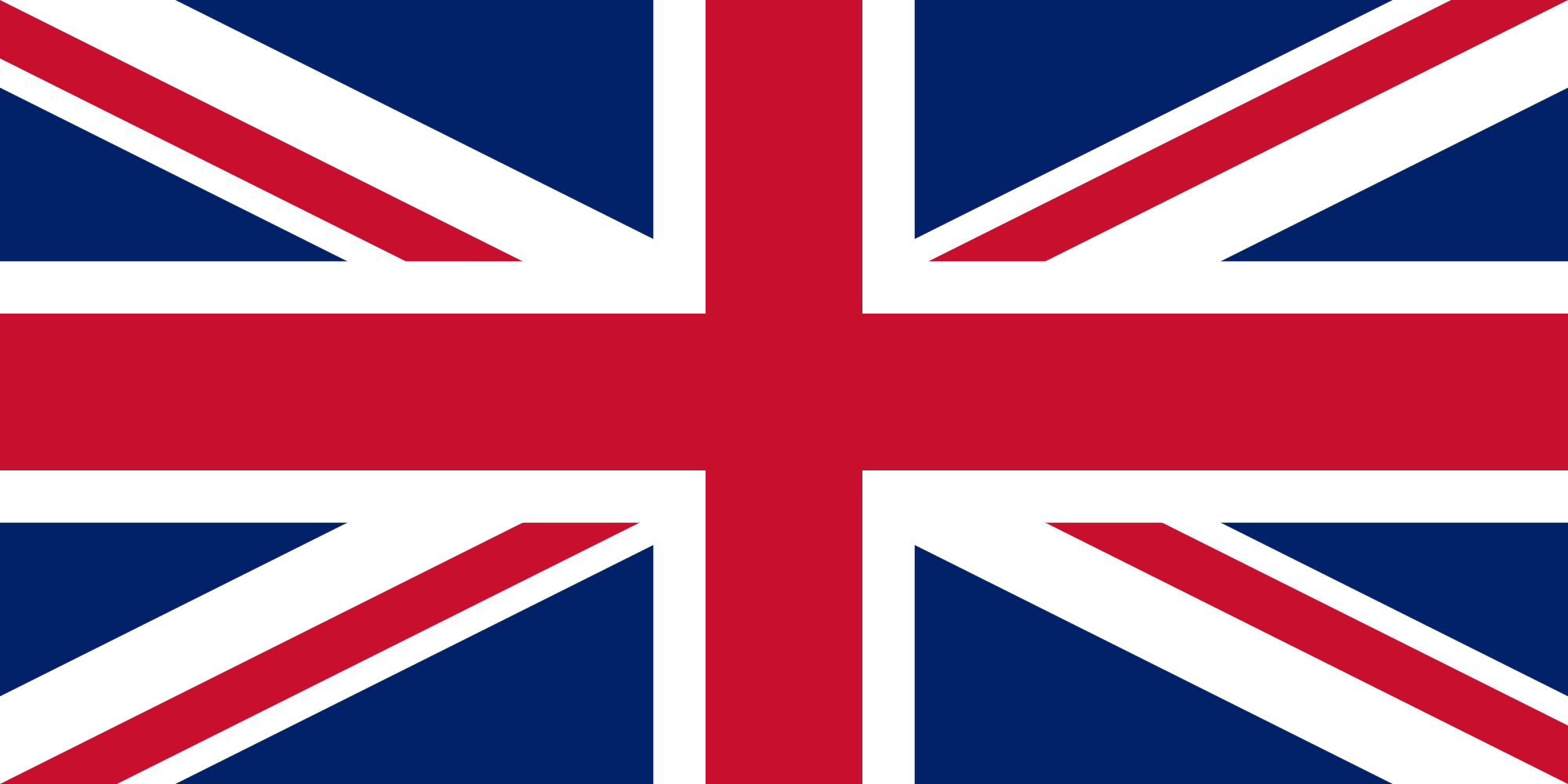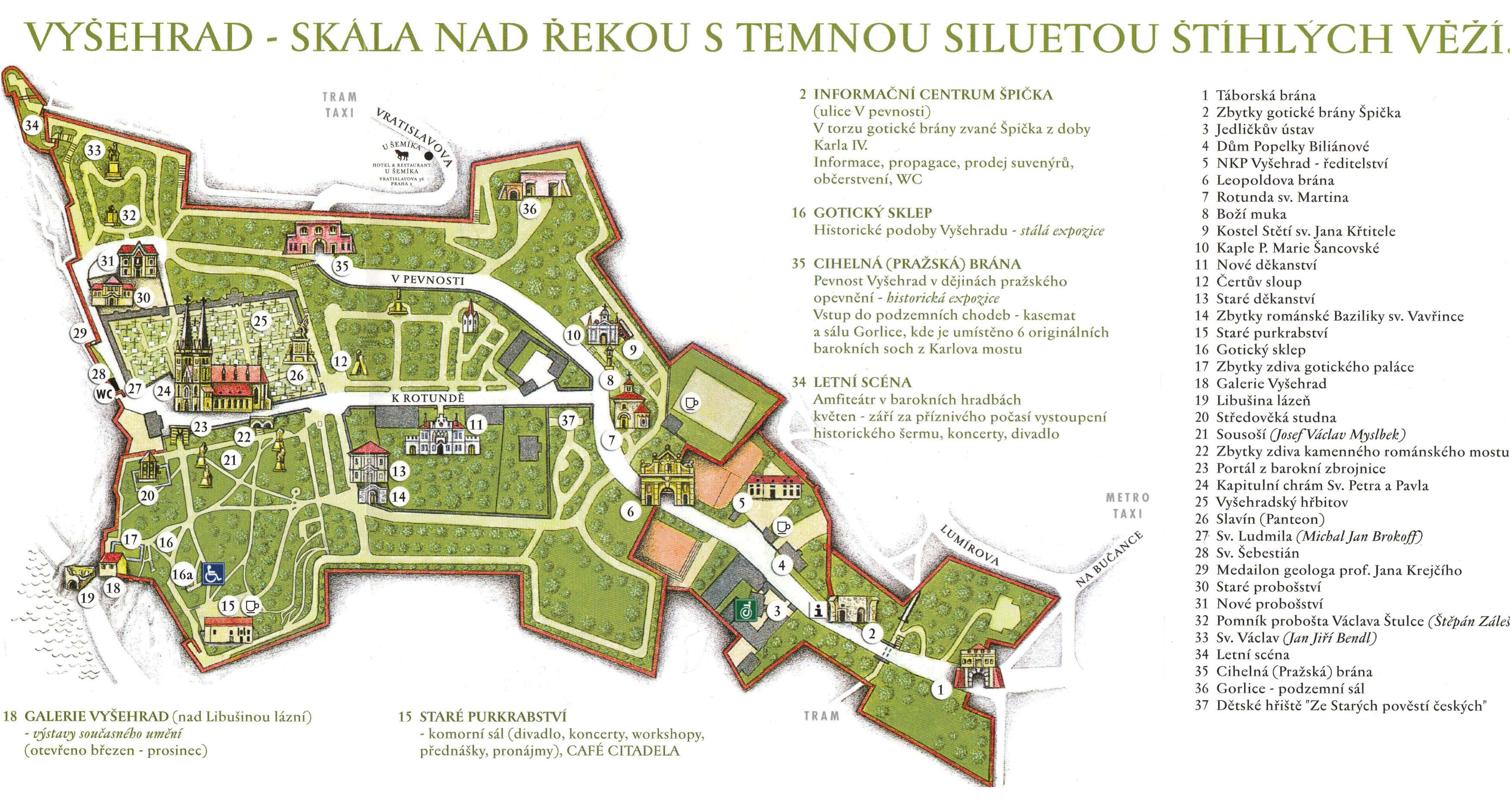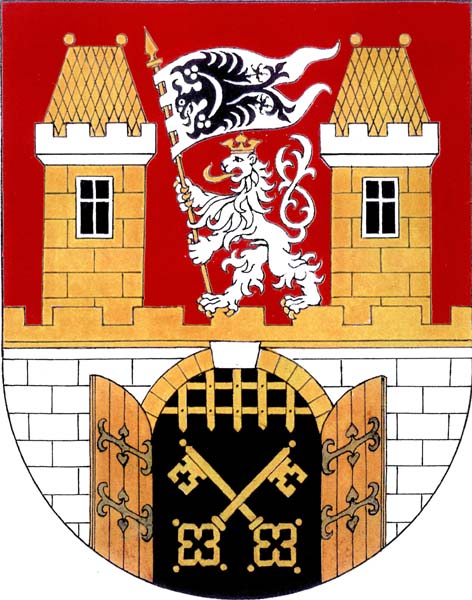Contact
Vyšehrad National Cultural Monument
V Pevnosti 159/5b
Phone: +420 241 410 348
email
Website
Flyer Fortress Heritage Bohemia
The mysterious rock over the Vltava River has always attracted the attention of the people. Ancient Czech legends are connected to the Vyšehrad. It was the defensive point of Prague from the south, royal castle, royal papal chapter, collegiate chapter, fortress and independent city. The present appearance shows the development of the medieval castle over the baroque citadel to the national symbol.
Experience World
Fortified City Vyšehrad
Vyšehrad has changed its function and appearance several times. It was a royal castle, even the seat of a monarch for a short period of time. It became a city and later, a Baroque fortress the appearance of which it has retained to these days. At the end of the 1800s, Vyšehrad became a national symbol and the cemetery of the most famous Czechs. Today, Vyšehrad is a popular destination for walks with breath-taking views of the city and a number of major monuments. There are many faces to Vyšehrad, come see them all!
Casemates and the Gorlice Hall
The 12-meter Gorlice Hall (1656 - 1678) is the biggest casemate of Vyšehrad after the shape of the bastion of St. Bernard was modified. It houses today six of the original Baroque statues from the Charles Bridge.
Leopold Gate, Tabor Gate, Brick Gate and Špička Gate
The Leopold Gate (1672) was the main representational entrance to the Vyšehrad Citadel until the construction of the Brick Gate.
Gothic Cellar
The large underground room is the remnant of one of four palace buildings from the time of Charles IV. It houses a narrative exposition presenting Vyšehrad in its various historical forms. Trace the myth of Vyšehrad and its significance for national identity.
Redan - Artillery Redoubt with Open Air Theatre
The area of so called redan, built in 1849–50 as an advanced position for mortar bombardment of the city. It was constructed by Viennese government as a reaction to the suppressed uprising in Prague in June 1848.
Tour Offers and Information
Guided Tours on Vyšehrad
Map
Monument and History
History The history of Vyšehrad is closely connected with the evolution of Prague districts and the history of the Czech nation. The massive rock looming high over the Vltava river was a tempting location for settlements since the most ancient times and became a subject of many legends. However, the first reliable documents of the existence of a hill fort at Vyšehrad only date back to the mid-10th century as the site where denarii (coins) of Boleslaus II were minted. Since then, Vyšehrad has changed its function and appearance several times. It was a royal castle, even the seat of a monarch for a short period of time. It became a city and later, a Baroque fortress the appearance of which it has retained to these days. At the end of the 1800s, Vyšehrad became a national symbol and the cemetery of the most famous Czechs. Since 1866 Vyšehrad became a National symbol of the most ancient history of the Czech nation. Today, Vyšehrad is a popular destination for walks with breath-taking views of the city and a number of major monuments. Since 1866 Vyšehrad became a National symbol .Film Vyšehrad 1741
Quelle: Prague by Matthaus Seutter ca.1730 Quelle: © Vyšehrad Quelle: Vyšehrad Quelle: Public domain
Architecture The construction of the Vyšehrad fortress according to a design by general Innocenzo Conti and Josef Priami started in 1653. Even before it began, the Tábor Gate with a connecting angular rampart was already finished on the Pankrác side as early as 1639. A massive brick fortification with the plan of an irregular pentagon featuring five bastions protruding from its corners was finished around 1727. The new fortification included the Baroque Leopold Gate (1669) and an elaborate network of Casemates – underground tunnels for quick movement of soldiers and storage of material. Most older buildings were demolished and the Vyšehrad Chapter was temporarily abandoned. An impressive armory was built in the former Royal Acropolis. However, it burned down in 1927 and was never restored. The Vyšehrad fortress was never used to counter any military campaign against Prague. On the contrary in the wars for the Austrian heritage, the fortress was used as a base by the French army and later, by the Prussian army. The final reconstruction of the fortress took place in the mid-1800s when the Empire-style Brick Gate (1841) and redan, a cannon firing position on the city side were finalized.Guided Tour - Baroque Fortress Vyšehrad Conceptual Study of Public Spaces of the Vyšehrad NCM
Quelle: Vyšehrad © prague-stay Quelle: © Vyšehrad Quelle: © Vyšehrad Quelle: © Prague City Tourism
Nature Experience The Vyšehrad parks began to be transformed into their current form in the 1880s, when the military importance of the fortress was in decline. The Vyšehrad cemetery was extended and rebuilt to form a national cemetery, the first composed parks were founded, and alleys of horse-chestnuts and locusts were planted along the paths and fortification walls. The fortification slopes were levelled, sown with grass and planted with shrubs. Roads were created on the bastions, and the newly accessible bastions provided distant views of the landscape as the road network was extended. The Vyšehrad hills were planted and modified according to the design of František Thomayer (today’s Libušinka). A crucial role was played by the figures of the Vyšehrad Chapter, the provosts Štulc and Karlach, who promoted the construction and general development of the Vyšehrad area. Two of the Vyšehrad parks are named in their honour. At the beginning of the 20th century, the city bought the territory of Vyšehrad from the military and turned Vyšehrad into a recreational area. In 1962, Vyšehrad was declared a national cultural monument and since then it has been managed and developed in accordance with the principles of monument care.Štulc Gardens , the Karlach Gardens and the Ducal and Royal Acropolis . Children’s Playground is located in the Small Garden on the mound opposite the Rotunda of St. Martin.Botanical Garden of the Natural Sciences Faculty of Charles University is opened from 1898 and gradually expanded to include an arboretum, ponds, greenhouses and large alpine garden.
Quelle: © Prague City Tourism Quelle: © Prague City Tourism Quelle: © Prague City Tourism Quelle: © Prague City Tourism
Partner









